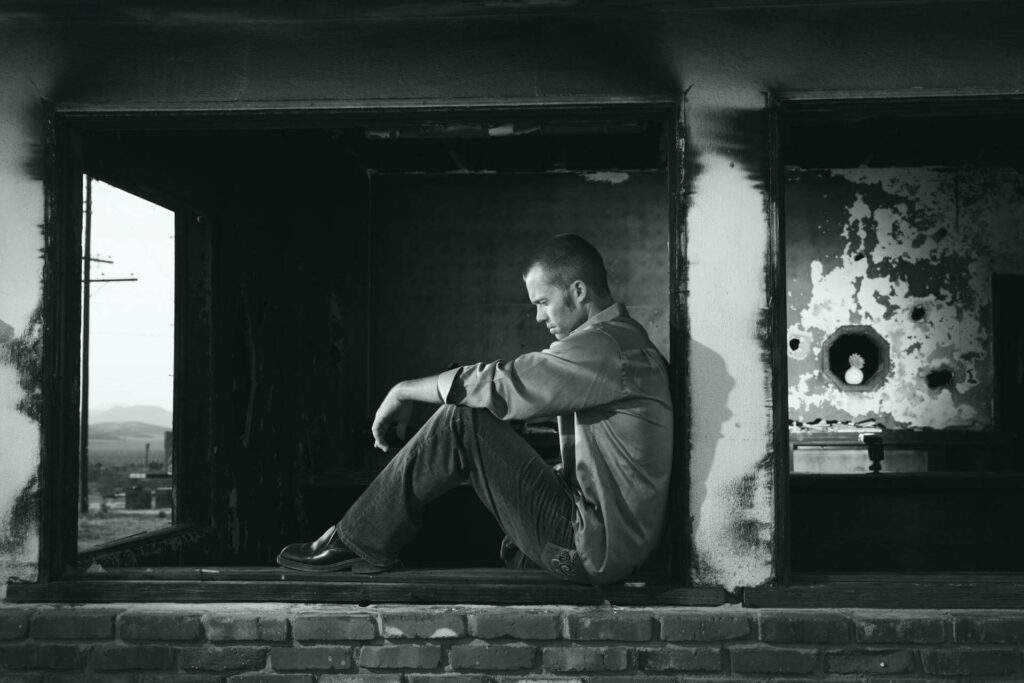Psychosis: An Overview
Psychosis, a profound and often bewildering state, represents a fundamental alteration in an individual’s perception and interpretation of reality. It’s not a monolithic condition, but rather a complex syndrome, a collection of symptoms that can arise from a multitude of underlying causes. To truly understand its impact, we must dissect its core features, explore its diverse origins, and consider the profound challenges it poses to individuals and their support systems.
At the heart of psychosis lies a significant disruption in the ability to distinguish between internal experience and external reality. This breakdown manifests in a wide array of symptoms, each contributing to a distorted worldview.
- Hallucinations: The Phantom Senses:
- These are sensory experiences that occur in the absence of corresponding external stimuli. They can affect any of the five senses, but auditory hallucinations, particularly hearing voices, are the most prevalent and often the most distressing.
- The content of these voices can vary widely, ranging from critical and commanding to reassuring or neutral. They may comment on the individual’s actions, engage in conversations, or express negative opinions.
- Visual hallucinations, involving seeing objects, people, or patterns that aren’t present, can also be profoundly disturbing. These can range from simple flashes of light to complex scenes.
- Other forms of hallucinations, such as olfactory (smell), gustatory (taste), and tactile (touch), are less common but can significantly impact the individual’s experience, contributing to feelings of paranoia and fear.
- The neurological pathways involved in hallucinations are complex, and still being researched.
- Delusions: Fixed False Beliefs:
- These are fixed, false beliefs that persist despite compelling evidence to the contrary. They represent a significant departure from shared reality and can significantly impair an individual’s ability to function.
- Common types of delusions include:
- Paranoid delusions: Beliefs of being persecuted, conspired against, or monitored by individuals or organizations.
- Grandiose delusions: Exaggerated beliefs of one’s own importance, power, or special abilities, often involving religious or political themes.
- Delusions of reference: Believing that neutral events or objects have personal significance, such as believing that song lyrics or news reports are directed at them.
- Nihilistic delusions: Beliefs that the world or oneself is nonexistent, dying, or about to be destroyed.
- Somatic delusions: Beliefs about one’s body being diseased, altered, or infested with parasites.
- These delusions can cause the person to act in dangerous ways, believing they are in danger.
- Disorganized Thinking and Speech: The Breakdown of Logic:
- Psychosis can disrupt the logical flow of thought, leading to incoherent speech patterns and impaired cognitive functioning.
- Common manifestations include:
- Derailment or loose associations: Rapid shifts between unrelated topics, making it difficult to follow a coherent train of thought.
- Tangentially: Responding to questions with irrelevant information, veering off-topic and failing to return to the original subject.
- Word salad: Incoherent speech that resembles a random collection of words, lacking grammatical structure or logical connections.
- Neologisms: Inventing new words or phrases with idiosyncratic meanings, often incomprehensible to others.
- Cognitive deficits are often present.
- Grossly Disorganized or Abnormal Motor Behavior: The Body in Disarray:
- This symptom encompasses a wide range of motor abnormalities, from unpredictable agitation to catatonia.
- Catatonia: A state of marked motor abnormalities, including immobility, excessive motor activity, extreme negativism, or peculiarities of voluntary movement.
- Agitation: purposeless and excessive motor activity, that can be dangerous.
- Childlike silliness, or other inappropriate behaviors.
- Negative Symptoms: The Diminishment of Normal Functioning:
- These represent a reduction or absence of normal behaviors and emotions, often contributing to social withdrawal and impaired functioning.
- Flattened affect: Reduced emotional expression, characterized by a monotone voice, limited facial expressions, and a lack of emotional responsiveness.
- Avolition: Lack of motivation or goal-directed behavior, making it difficult to initiate and complete tasks.
- Alogia: Reduced speech output, characterized by brief and unelaborated responses.
- Anhedonia: loss of pleasure in activities that were once enjoyed.
- Asociality: reduced social interaction, and withdrawal.
The origins of psychosis are diverse, encompassing:
- Mental Health Disorders: The Psychiatric Spectrum:
- Schizophrenia, bipolar disorder, schizoaffective disorder, and severe depression are among the most common psychiatric conditions associated with psychosis.
- These disorders often involve complex interactions between genetic predisposition and environmental triggers.
- Substance Use: The Drug-Induced Reality Distortion:
- Certain substances, particularly stimulants, hallucinogens, and excessive alcohol, can trigger psychotic episodes, even in individuals without a preexisting vulnerability.
- The use of cannabis, especially during adolescence, has been linked to an increased risk of psychosis.
- Medical Conditions: The Organic Causes:
- Brain tumors, infections (such as encephalitis), neurological disorders (such as epilepsy), and autoimmune diseases can sometimes induce psychosis.
- Hormonal imbalances can also be a factor.
- Sleep Deprivation: The Disrupted Mind:
- Severe sleep deprivation can trigger psychotic symptoms in vulnerable individuals, disrupting normal brain function.
- Trauma:
- Experiencing severe trauma can lead to psychosis, especially if the trauma occurred during childhood.
The impact of psychosis extends far beyond the individual, affecting their relationships, work or academic performance, and overall quality of life. The stigma associated with mental illness can further exacerbate these challenges, leading to social isolation and discrimination.
Early intervention is crucial for improving outcomes. Prompt diagnosis and treatment can help reduce symptom severity, prevent relapse, and enhance long-term functioning.
Connect Free. Improve your mental and physical health with a professional near you

Factors Contributing to Psychosis
The etiology of psychosis is a complex and multifaceted puzzle, involving a confluence of genetic, environmental, and neurobiological factors. Understanding these intricate interactions is essential for developing effective prevention and treatment strategies.
- Genetic Predisposition: The Inherited Vulnerability:
- Twin and family studies have consistently demonstrated a strong genetic component to psychosis, particularly in schizophrenia.
- While no single gene has been identified, multiple genes are believed to contribute to susceptibility, each playing a small but significant role.
- Genetic vulnerability interacts with environmental triggers, increasing the likelihood of developing psychosis in susceptible individuals.
- Epigenetics, the study of how environmental factors can influence gene expression, also plays a crucial role.
- Neurochemical Imbalances: The Brain’s Dysregulated Chemistry:
- The dopamine hypothesis remains a central focus in psychosis research, suggesting that excessive dopamine activity in certain brain regions contributes to positive symptoms.
- However, other neurotransmitters, such as glutamate, serotonin, and GABA, are also implicated in the pathophysiology of psychosis.
- Glutamate dysfunction may contribute to cognitive deficits and negative symptoms.
- Complex interactions between these neurotransmitters are crucial for normal brain function, and their dysregulation can lead to psychotic symptoms.
- Brain Structure and Function: The Neural Architecture of Psychosis:
- Neuroimaging studies have revealed subtle structural and functional abnormalities in the brains of individuals with psychosis.
- These abnormalities may involve the prefrontal cortex, temporal lobes, and limbic system, areas crucial for cognition, emotion, and perception.
- Reduced gray matter volume, enlarged ventricles, and altered brain connectivity have been observed in some individuals.
- Problems with neurodevelopment, and neuroplasticity.
- Environmental Triggers: The External Influences:
- Stressful life events, such as trauma, abuse, and social isolation, can significantly increase the risk of psychosis in vulnerable individuals.
- Childhood trauma, in particular, can have long-lasting effects on brain development and mental health.
- Substance use, especially during adolescence, is a potent trigger. Cannabis, stimulants, and hallucinogens can induce psychotic episodes or exacerbate underlying vulnerabilities.
- Urban environments, and socioeconomic stressors can also play a significant role.
- Developmental Factors: The Lifelong Impact:
- Prenatal complications, such as infections, nutritional deficiencies, and exposure to toxins, can affect brain development and increase susceptibility to psychosis.
- Early childhood experiences, including attachment difficulties and adverse family dynamics, can also contribute to vulnerability.
- Problems with neurodevelopment.
- Substance Use: The Drug-Induced Psychosis:
- Certain drugs can directly induce psychotic symptoms, even in individuals without a preexisting vulnerability.
- Withdrawal from certain substances, such as alcohol and benzodiazepines, can also trigger psychotic episodes.
- Substance use can exacerbate underlying mental health conditions, increasing the severity and frequency of psychotic symptoms.
- The age of first usage of substances is a significant factor.
- Inflammatory Processes: The Body’s Response:
- There is increasing evidence that inflammatory processes in the brain and body can contribute to the development of psychosis.
- Certain autoimmune conditions and infections can increase the risk.

Free consultations. Connect free with local health professionals near you.
Management and Treatment of Psychosis
The management and treatment of psychosis represent a complex and multifaceted endeavor, requiring a comprehensive, multidisciplinary approach tailored to the unique needs of each individual. The goals of treatment extend far beyond mere symptom reduction, encompassing improved functioning, enhanced quality of life, and fostering long-term recovery. This journey necessitates a collaborative effort between the individual, their family, and a dedicated team of mental health professionals.
- Antipsychotic Medications: The Pharmacological Foundation:
- These medications remain the cornerstone of treatment, helping to regulate neurotransmitter imbalances and alleviate positive symptoms, such as hallucinations and delusions.
- Second-generation antipsychotics (SGAs), also known as atypical antipsychotics, are often preferred due to their generally lower risk of extrapyramidal side effects (EPS), such as muscle stiffness and tremors, compared to first-generation antipsychotics (FGAs).
- However, all antipsychotics can have side effects, including weight gain, metabolic disturbances (such as increased cholesterol and blood sugar), and movement disorders (such as tardive dyskinesia).
- Long-acting injectable antipsychotics (LAIs) can be particularly beneficial for individuals who struggle with medication adherence, ensuring consistent medication levels and reducing the risk of relapse.
- Individualized medication management is crucial, involving careful monitoring of side effects and adjustments to dosage or medication type as needed.
- Pharmacogenomics, the study of how genes affect a person’s response to drugs, is a growing field that holds promise for optimizing medication selection and minimizing side effects.
- It is very important to educate the patient about the importance of medication adherence, and the risks of stopping medication abruptly.
- Psychotherapy: The Therapeutic Alliance:
- Psychotherapy plays a vital role in helping individuals develop coping strategies, manage symptoms, and improve overall functioning.
- Cognitive behavioral therapy (CBT) can help individuals challenge distorted thoughts, develop coping mechanisms for hallucinations and delusions, and reduce distress.
- Family therapy can provide support and education for family members, promoting a supportive environment, reducing expressed emotion, and improving communication.
- Social skills training, help people to improve their social interactions, and form lasting relationships.
- Acceptance and commitment therapy (ACT) helps people to accept difficult thoughts and feelings, and focus on values, and living a meaningful life.
- Dialectical behavior therapy (DBT), helps people to regulate their emotions, and handle difficult situations.
- Psychoeducation, is very important, to help the patient, and their family, understand the illness, and how to manage it.
- Trauma informed therapy, is very important for patients that have experienced trauma.
- Hospitalization: The Safe Haven:
- Hospitalization may be necessary in cases of severe psychosis, acute exacerbations, or when there is a risk of harm to self or others.
- Hospitalization provides a safe and structured environment for intensive treatment, including medication management, psychotherapy, and supportive care.
- Crisis intervention teams can provide immediate support and assessment in community settings, potentially preventing the need for hospitalization.
- The goal of hospitalization, is to stabilize the patient, and prepare them for outpatient treatment.
- Social Support: The Community Connection:
- Social support is essential for promoting recovery and reducing the risk of relapse.
- Support groups and community-based programs can provide valuable social connections, practical assistance, and peer support.
- Vocational rehabilitation can help individuals return to work or school, promoting independence and self-sufficiency.
- Assertive community treatment (ACT) teams provide intensive, community-based support for individuals with severe mental illness, helping them access essential services and maintain stability.
- Case management, is very important, to help the patient navigate the complex mental health system.
- Supported housing, and help with day to day living, can make a huge difference.
- Lifestyle Modifications: The Holistic Approach:
- Lifestyle modifications can significantly impact symptom severity and overall well-being.
- Regular exercise, a balanced diet, and adequate sleep can promote physical and mental health.
- Avoiding substance use is crucial, as it can exacerbate psychosis and interfere with treatment.
- Stress reduction techniques, such as mindfulness meditation and yoga, can help individuals manage anxiety and improve coping skills.
- Improving sleep hygiene is very important.
- Integrated Care: The Comprehensive Model:
- Addressing co-occurring mental health and substance use disorders is essential for optimal outcomes.
- Integrated care models provide coordinated treatment for both mental health and substance use issues, improving access to care and reducing fragmentation.
- Addressing any underlying medical conditions is also crucial, as they can contribute to or exacerbate psychosis.
- It is important to address all aspects of a patient’s health.
- Ongoing Monitoring and Relapse Prevention: The Continuous Care:
- Ongoing monitoring of symptoms, medication adherence, and side effects is essential for preventing relapse.
- Relapse prevention plans, developed in collaboration with the individual and their family, can help identify early warning signs and implement strategies to prevent exacerbations.
- Regular follow-up appointments with mental health professionals are crucial for maintaining stability and addressing any emerging concerns.
- It is very important to have a plan in place, for when a crisis occurs.
- Long term treatment, is often required.
- The Importance of Patient Empowerment:
- A patient centered approach is very important.
- Empowering the patient to take an active role in their own recovery.
- Shared decision making.
- Focusing on the patient’s strengths.
- Promoting hope and optimism.
The management and treatment of psychosis are an ongoing process that requires collaboration, compassion, and a commitment to promoting recovery and well-being.
Conclusion
The journey through the complexities of psychosis reveals a landscape marked by profound challenges, yet also illuminated by the potential for resilience and recovery. It is a condition that demands our utmost attention, not only for its impact on individuals, but for its broader implications on families and society. As we’ve explored, psychosis is not a singular entity, but a multifaceted syndrome, a collection of symptoms arising from a confluence of genetic, environmental, and neurobiological factors.
Understanding psychosis requires us to move beyond simplistic explanations and embrace the intricate interplay of these contributing elements. Genetic predispositions, while significant, do not dictate destiny. Environmental triggers, such as trauma and substance use, can significantly shape vulnerability. The delicate balance of neurochemistry and the architecture of the brain, too, play pivotal roles. This understanding calls for a holistic approach, one that recognizes the individual as a complex being, shaped by a unique tapestry of experiences and biological factors.
The management and treatment of psychosis represent a testament to the advancements in mental health care. Antipsychotic medications, while not a panacea, offer a critical foundation for symptom stabilization. Psychotherapy, in its various forms, empowers individuals to develop coping strategies, challenge distorted thinking, and build meaningful lives. The importance of social support, vocational rehabilitation, and lifestyle modifications cannot be overstated. These elements foster a sense of belonging, purpose, and well-being, essential components of recovery.
However, the journey is not without its obstacles. Stigma surrounding mental illness continues to cast a long shadow, hindering access to care and perpetuating isolation. The complexity of co-occurring conditions, such as substance use disorders, adds further layers of challenge. The need for integrated care models, which address the whole person, becomes increasingly apparent.
Moving forward, several key priorities emerge. Firstly, early intervention is paramount. Prompt diagnosis and treatment can mitigate the severity of symptoms, prevent relapse, and improve long-term outcomes. Secondly, research must continue to unravel the intricate mechanisms underlying psychosis, leading to more targeted and effective interventions. Thirdly, and perhaps most importantly, we must foster a culture of compassion and understanding, one that dismantles stigma and promotes inclusion.
The path to recovery is not linear, and it requires patience, persistence, and a collaborative spirit. It is a journey that demands a commitment to empowering individuals to reclaim their lives, to find meaning and purpose amidst the challenges. It is a journey that reinforces our shared humanity, reminding us of the resilience of the human spirit in the face of adversity.
In essence, navigating the complex landscape of psychosis requires a shift in perspective. It demands that we move beyond viewing it as a static condition and embrace it as a dynamic process, one that is influenced by a multitude of factors and responsive to a range of interventions. By fostering a culture of understanding, prioritizing early intervention, and embracing a holistic approach to care, we can empower individuals to navigate this challenging landscape and build fulfilling lives. The goal is not merely symptom management, but the restoration of hope, the rekindling of potential, and the rediscovery of a life worth living.
Time to feel better. Find a mental, physical health expert that works for you.
Common FAQs
What is psychosis?
Psychosis is a mental state characterized by a loss of contact with reality. This can involve hallucinations (seeing or hearing things that aren’t there), delusions (fixed, false beliefs), disorganized thinking and speech, 1 and abnormal motor behavior. It’s a symptom, not an illness itself.
Is psychosis the same as schizophrenia?
No. Schizophrenia is a mental illness that can cause psychosis, but psychosis can also be a symptom of other conditions, such as bipolar disorder, severe depression, substance use, and certain medical conditions.
What are the signs and symptoms of psychosis?
Common symptoms include:
- Hallucinations (especially auditory)
- Delusions (paranoid, grandiose, etc.)
- Disorganized thinking and speech
- Grossly disorganized or abnormal motor behavior
- Negative symptoms (reduced emotional expression, lack of motivation)
What causes psychosis?
There’s no single cause. Factors that can contribute include:
- Genetic predisposition
- Neurochemical imbalances in the brain
- Brain structure and function abnormalities
- Stressful life events and trauma
- Substance use (especially cannabis, stimulants, and hallucinogens)
- Certain medical conditions
- Prenatal complications.
Can psychosis be cured?
While there may not be a “cure” in the traditional sense, psychosis can be effectively managed and treated. Many individuals with psychosis can lead fulfilling lives with appropriate treatment and support.
What treatments are available for psychosis?
Common treatments include:
- Antipsychotic medications
- Psychotherapy (CBT, family therapy, etc.)
- Hospitalization (in severe cases)
- Social support and vocational rehabilitation
- Lifestyle changes.
What should I do if I think someone I know is experiencing psychosis?
Encourage them to seek professional help from a psychiatrist or mental health professional. It’s crucial to approach the situation with empathy and understanding. Avoid arguing with them about their delusions or hallucinations.
Is psychosis dangerous?
In some cases, psychosis can lead to behaviors that pose a risk to the individual or others, especially if left untreated. However, with proper management, most individuals with psychosis are not dangerous.
How can I support someone with psychosis?
Provide a supportive and understanding environment. Educate yourself about psychosis. Encourage them to adhere to their treatment plan. Offer practical assistance and emotional support.
Can substance use cause psychosis?
Yes. Certain substances, especially stimulants, hallucinogens, and excessive alcohol use, can trigger psychotic episodes. Cannabis use, particularly in adolescents, has also been linked to an increased risk.
NOTICE TO USERS
MindBodyToday is not intended to be a substitute for professional advice, diagnosis, medical treatment, or therapy. Always seek the advice of your physician or qualified mental health provider with any questions you may have regarding any mental health symptom or medical condition. Never disregard professional psychological or medical advice nor delay in seeking professional advice or treatment because of something you have read on MindBodyToday.
Share this article

Let us know about your needs so we can answer any of your questions.

Fast and easy to understand quote

We come fully prepared.Hire when ready.
Popular Professionals Near You
You might also like
Emotional Labor
, What is Emotional Labor? Everything you need to know Find a Pro Defining Emotional Labor Emotional labor, a concept […]
Emotional Intelligence
, What is Emotional Intelligence? Everything you need to know Find a Pro Emotional Intelligence: Origins The ascent of emotional […]
All About Emotional Contagion
, All About Emotional Contagion FIND LICENSE A PROFESSION Emotional Resonance in Relationships Emotional resonance, a profound and often subconscious […]




